Karl Lagerfeld, You Will Always Be Famous
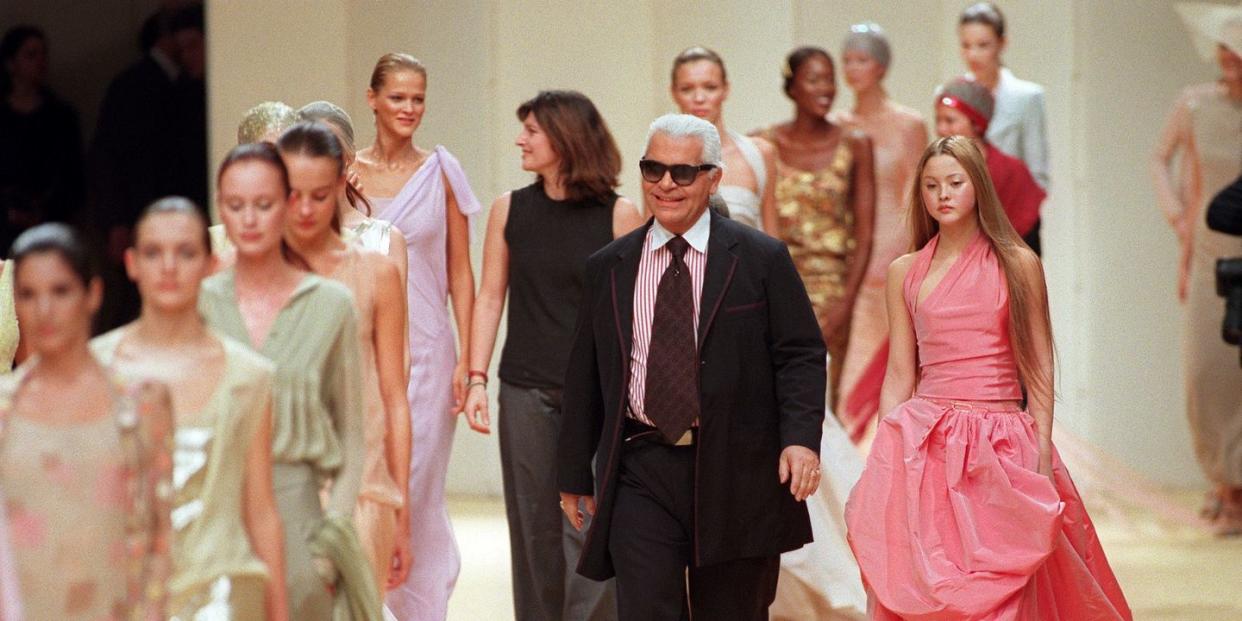
Karl Lagerfeld was a complicated, shape-shifting cultural icon. He was more famous than many of his famous devotees. He delighted as easily as he offended. Among younger fashion fans, he is heavily criticized for the blithe way in which he discussed women and their bodies, but he is simultaneously responsible for fashion as they know it.
He was born in 1935, or 1938, or 1933, though no one seems to know for certain. As an adult, he wore a signature uniform—black suit, giant tie, dark rectangular sunglasses, fingerless gloves, low powdered white ponytail—that seems to have its roots in his childhood in Hamburg, Germany, where he wore a formal suit to school. His penchant for stinging aphorisms, collected in a 2013 book, The World According to Karl, came from his mother, who once told him he couldn’t smoke because his hands were too ugly.
As a teenager, Lagerfeld ran to Paris, entered a fashion competition now known as the International Woolmark Prize with no formal education in 1954, and won for his coat designs. He climbed the ranks as an apprentice in couture with Pierre Balmain and then Jean Patou before transitioning into the 1960s ready-to-wear scene. He began to work at Fendi in 1965, left for Chanel in 1983, and launched his own line one year later in 1984. When asked if he could envision a time when he would stop working, he said, “No. I would die on the spot.” He passed away in 2019; at his last couture show, he was too ill to take a bow, but he was still said to be there.
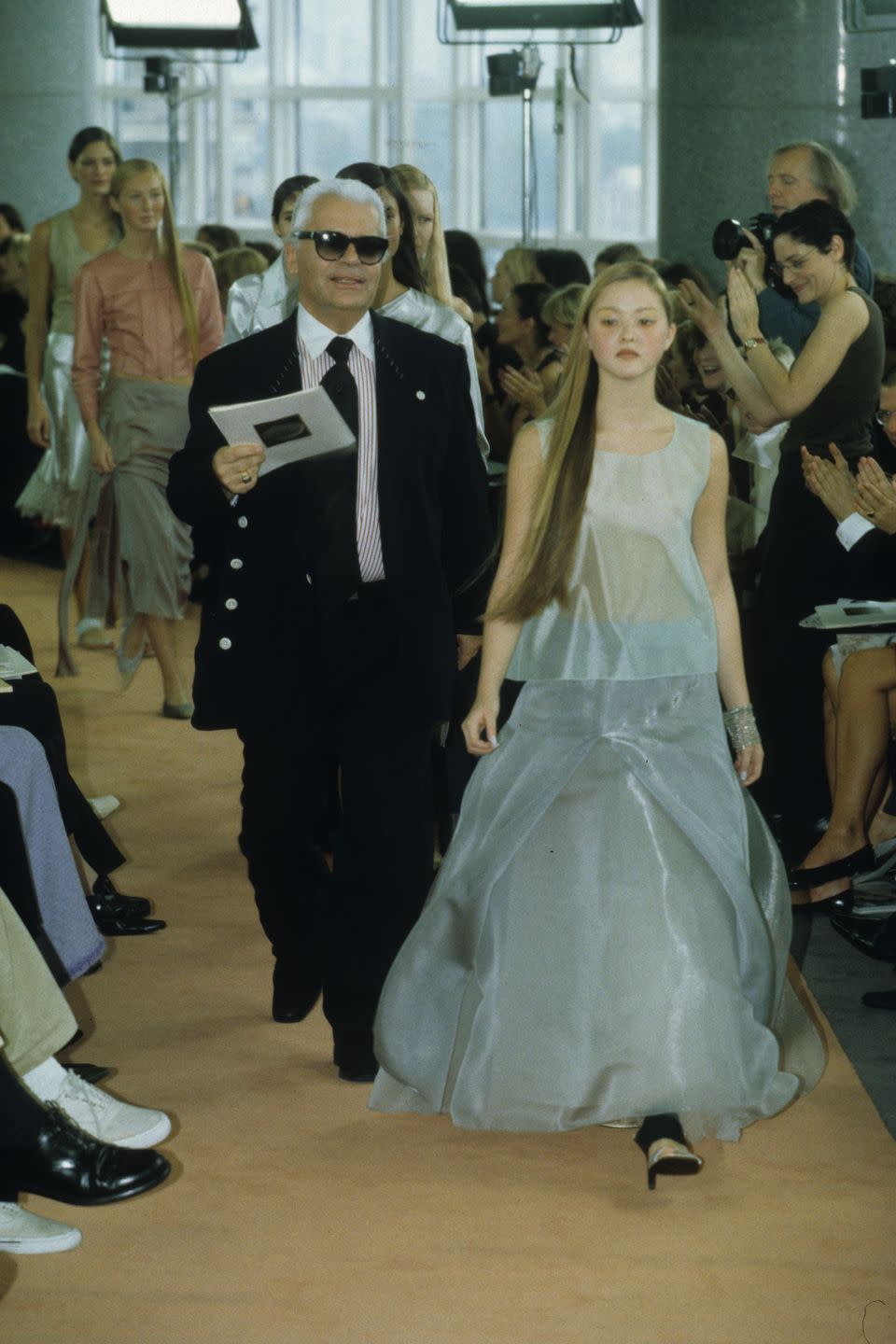
Lagerfeld's life was defined by his stamina. For much of it, he made eight collections annually for Chanel, oversaw couture and ready-to-wear for Fendi, and designed for his own eponymous line. Yet he famously disliked being called a tireless worker, telling Susannah Frankel of The Independent in 2012, “Please don’t say I work hard. Nobody is forced to do this job, and if they don’t like it they should do another one. People buy dresses to be happy, not to hear about somebody who suffered over a piece of taffeta.”
Of course, that's exactly what someone dedicated to the grind would say. They would probably also think “Sweatpants are a sign of defeat,” which is another Lagerfeldism. As aphorisms go, it might be even more famous than Coco Chanel’s “In order to be irreplaceable one must always be different”—a phrase that surely applies to Lagerfeld, who took over the luxury house she built a decade after it had gone stale and turned it into a modern global phenomenon.
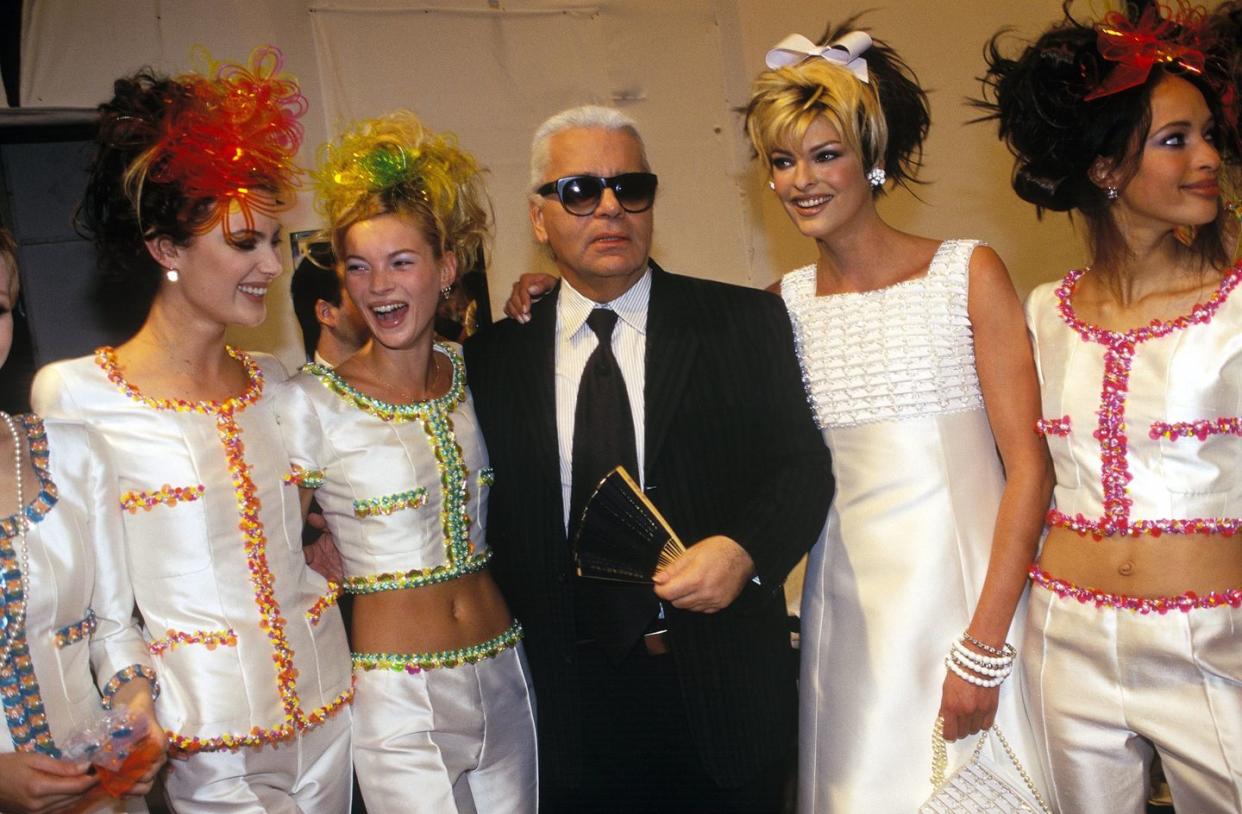
Lagerfeld was also a photographer and the author of a popular 2002 book, The Karl Lagerfeld Diet, where he chronicled how he lost 92 pounds with the help of Diet Coke. In 2014, Mattel made his likeness into a Barbie. Net-a-Porter sold $200,000 worth of the $200 dolls; current listings on Ebay go up to $3,500. The only thing he was adamant he was not was an artist. “It is a little boring when designers say they are,” he said in the documentary The First Monday in May.
Supermodels held his hand on the runway, Rihanna leaned on his shoulders at parties, actresses like Kristen Stewart and musicians like Pharrell Williams were cast in short films directed by Baz Luhrmann about Chanel. He loved nepo babies, like the 5' 3" Lily Rose Depp ,who often closed many of his final shows. He worshiped skinny, disparaged “fat.” He said terrible things about just about everyone, but also characterized himself as delusional: “I’m very much down to earth. Just not this earth.” His beloved Birman cat, Choupette, has two maids, Françoise and Marjorie, and only flys private.
Yves Saint Laurent, Cristobal Balenciaga, and Christian Dior have been immortalized by the silhouettes they created, but Lagerfeld is known for stage-setting an entire world. His most enduring work was transforming Chanel into a label desired by the rich and famous that still captured the attention of those who weren't. He made double-flap bags, tweed, skirt suits, camellia flowers, pearls, and that notorious interlocking double C logo instantly recognizable as tickets of entry into his universe. They are signifiers of a certain way of life as much as they are symbols of modern culture, recognizable as the Mercedes logo or the red lettering of the Diet Coke can he loved so much.
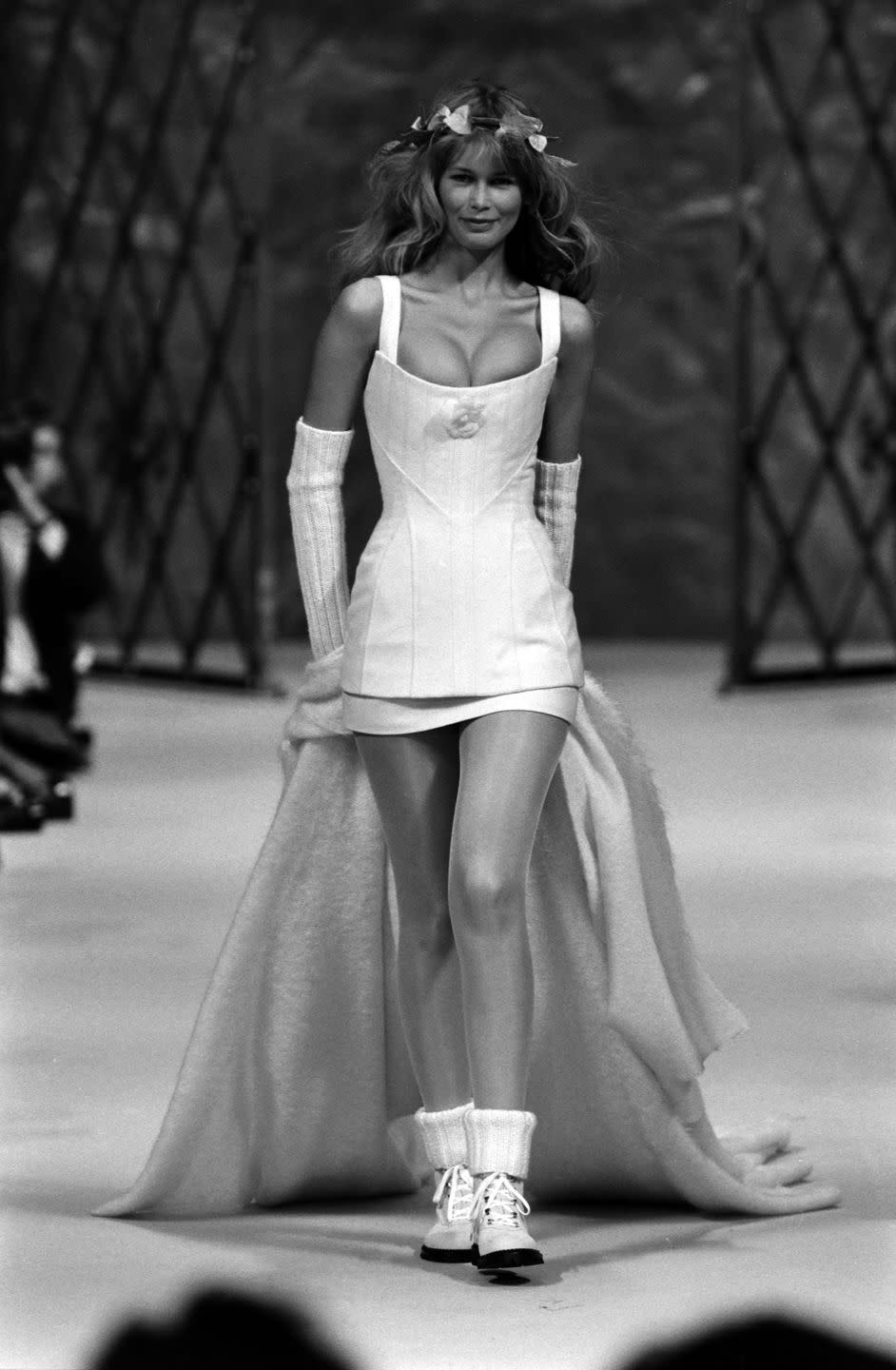
When Sofia Richie married Elliot Grainge in a wedding that took the internet by storm this past week, she wore Chanel, a detail noted by everyone who obsessed over the South of France spectacle like it was a high-stakes sports extravaganza. Her three bespoke gowns were crafted by Chanel creative director Virginie Viard, with the most beloved being a recreation of a fall 1993 dress originally designed by Lagerfeld himself. His looks resonate all these decades later because they are beautiful and because they are Chanel. The name isn’t his, but in many ways it was.
His shows had elaborate sets: waterfalls, spaceships, beaches, forests, a supermarket with baskets interwoven with Chanel’s signature black leather chain. They were Instagrammable before Instagram, so of course they were consumed on social media with ardor after its launch; people often seemed to want to be there more than they wanted the clothes. His legacy is not a specific garment but transformation of fashion into something that makes you feel like you are someone.
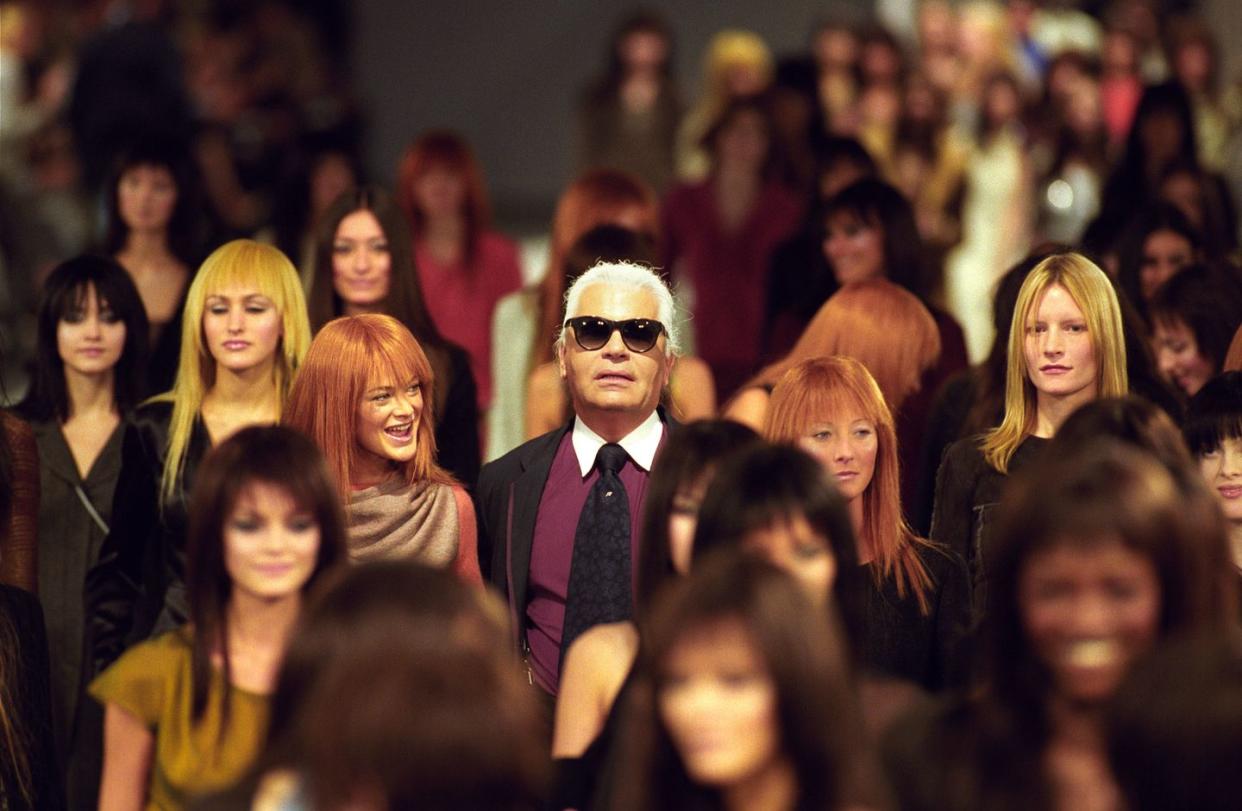
So it's fitting that he is the theme of this year’s Met Gala, and the subject of the Costume Institute’s accompanying exhibit. It's also funny because he disliked retrospectives. We know this because he said, verbatim, "I dislike retrospectives” during a press run of the 2005 Chanel Show at the Costume Institute of the Metropolitan Museum of Art, which he later refused to attend. Even if he did not appreciate seeing “old dresses,” as he told The New York Times, the pop culture sensation that the Met Gala red carpet has become feels more like an ode to his impact than any retrospective could be.
Come Monday, there will be a parade of the most famous names in the world wearing fabulous dresses, many of which will likely be “old,” designed by Lagerfeld himself or created in his image. And everyone will tune in, whether they love it or hate it, because the world we’re living in is still very much Karl Lagerfeld’s.
You Might Also Like
